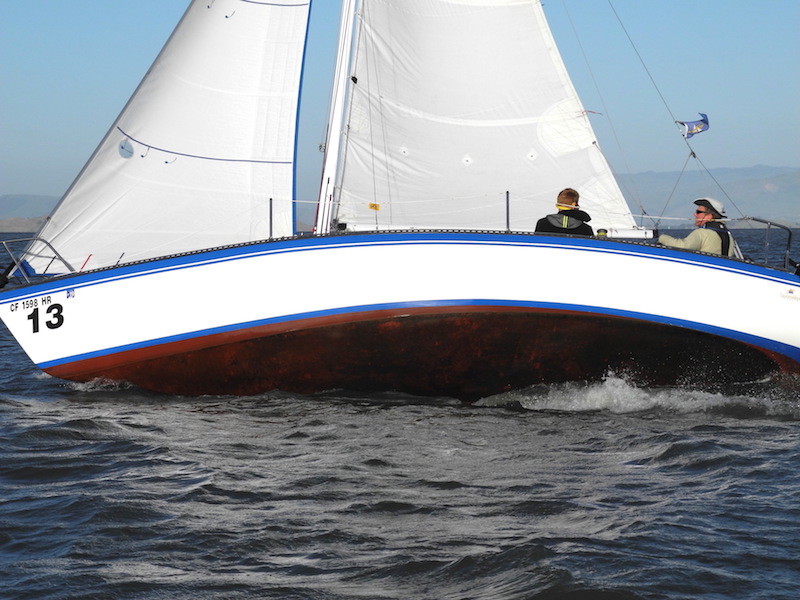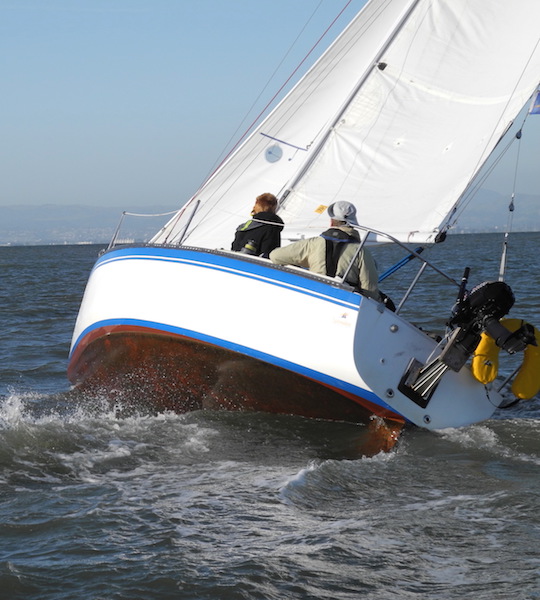Have you noticed how some sailors stretch out ahead upwind, while others fall back?
Part of making good progress upwind is keeping the boat to an optimal angle of heel. Too little and you give up power, too much and you might feel fast, but are losing height.
The Merit 25 is wide at the waterline, but has little flare from the waterline to the sheerline. If the boat is heeled too far, the buoyancy concentrated close to the waterline lifts the keel and rudder to the surface very easily.
Take a look at the shot below and note the white water exiting from just astern of the keel. This is indicative of an abrupt and uncontrolled release of pressure from behind the keel, showing that at this, excessive heel angle the boat is unable to convert the drive from the sails to forward motion.

So what does that look like from astern? Here we can clearly see that the underside of the boat on the windward side is entirely out of the water.
Note also the pressure wave that flowing from the rudder, indicating that the boat is sliding sideways and making leeway rather than driving to windward.

In their defense, this boat is lightly crewed and is cruising, they’re dealing with gusts by feathering up into the wind rather than actively trimming.
Note also the loose mainsail luff and very full sails. Neither is conducive to upwind performance.
So what should you be aiming for? A good heel angle for the Merit 25 is 15° – 20°, less than you would heel a J/24.
When you find your heel angle exceeding this, move crew weight to windward, flatten the sails and keep the main sheet out of the cleat so your trimmer can ease in
the puffs and sheet back in during the lulls.
In gusty conditions, the benefits from active mainsheet trimming typically exceed the benefits of the extra crew member on the rail.
The bonus of having another crew member in the cockpit is that they can watch the compass while teh skipper concentrates on driving and can glance regularly under the jib for boats and obstacles.


